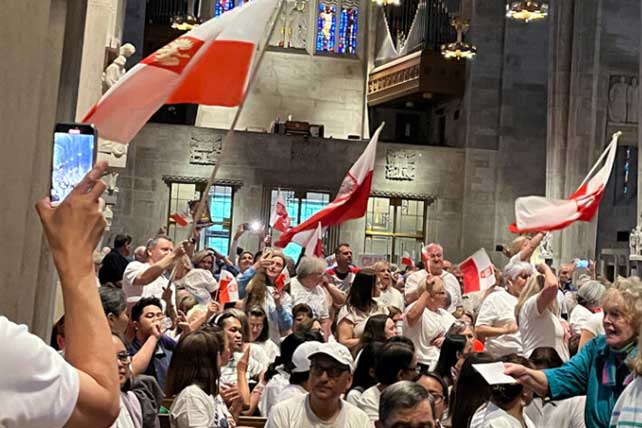“Our community is growing,” the bishop told Latinos in Spanish. “The truth is that what we’re asking of you, in a sense, is to make a sacrifice, to extend a hand, to share some of our community’s treasure.”

Community members attended a forum with signs and banners to discourage the closing of facilities. RNS photo by Aleja Hertzler-McCain
The Latino Catholics, who, unlike the English-speakers, received a lecture on respect before the discussion began, were more subdued in their criticism of the proposal. Like the group at the cathedral, they cited concerns with continuing ministries, impact on children, transportation and parking and space at combined parishes, even as many Latinos spoke of obedience.
“We are willing for the changes to be made in the church, but we feel that even the church is rejecting us,” one parishioner from St. Clare, a parish proposed to close, said.
Spanish- and English-speaking Catholics alike expressed hope that, given the chance, they could fill their pews by turning their attention to evangelization. Some pleaded with the archdiocese to give them more time.
Despite Baltimore’s historic place in American Catholic history, Reynolds said it would be inaccurate to describe the city’s parish closures as a sign that American Catholicism is dying, especially as Catholicism is growing in the Southwest and Southeast.
“You have a changing religious landscape. You have a changing landscape of Mass attendance and practice. Many of these buildings are more than a century old. You need to do something. It’s kind of the problem of reality,” she said.
This article originally appeared here.

